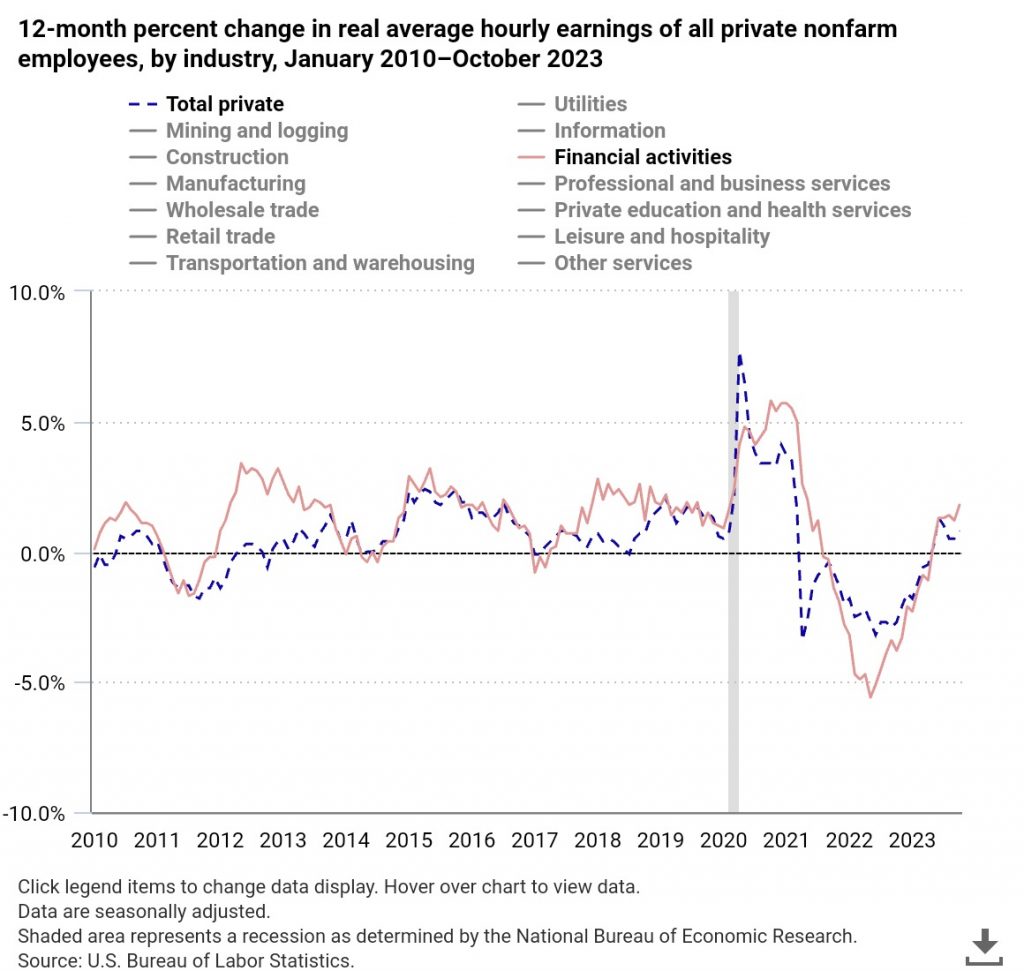The 2023 UAW strike was a labor strike involving automobile workers in the labor union(UAW) and the big three—Ford Motor Company, General Motors, and Stellantis
The UAW (the United Auto Workers) is the labor union of America.
One of the largest and most diverse unions in North America, with members in virtually every sector of the economy.
On September 15th, about 13,000 UAW members went on strike following the expiration of their previous contract with the Big Three. That gradually expanded to about 40,000 of the union’s 146,000 members walking off the job. That slowed production for each company, with the effects ramping up over time.
As reported by Bloomberg, the return of striking United Auto Workers to vehicle assembly lines is seen driving a pickup in November payrolls, representing a pause in the recent trend of moderating US employment growth.
Government data on Friday are projected to show payrolls in the world’s largest economy increased by 180,000 after a 150,000 October advance.
Such a print would still leave average job growth over the past three months down about 100,000 from the pace seen earlier in the year.

It is anticipated that wages will not rise at an accelerated rate and that the job market may not be very robust.
By this, prices may be kept from increasing too quickly (inflation).
This implies that in order to slow down the economy, the Federal Reserve may not need to raise interest rates.
In November, on average, people earned 4% more per hour than they did in November of last year. However, this increase is smaller than what we’ve seen in recent months and is the smallest since the middle of 2021
“November’s job report will send mixed signals about the state of the labor market.
A solid nonfarm payroll print following a resolution to the UAW strikes will contrast with a weak household survey, where we expect the unemployment rate to edge up to 4.0%.
Our view is that the economy is likely in a turning point toward a recession,”
Said Bloomberg economists.
According to the US Bureau of Labor statistics, the real average hourly earnings rose 0.8 percent from October 2022 to October 2023.
The increase in real average hourly earnings combined with a decrease of 0.9 percent in the average workweek resulted in no change in real average weekly earnings over this period.
The image below, from the US Bureau of Labor Statistics, shows a 12-month percent change in real average hourly earnings of all private nonfarm employee
The following industries had increases of at least 1.5 percent in real average hourly earnings from October 2022 to October 2023, this is according to the US Bureau of Labor Statistics:
- Mining and logging (2.7 percent),
- Transportation and warehousing (1.9 percent),
- Financial activities (1.8 percent),
- Construction (1.7 percent), and
- Manufacturing (1.5 percent).
The 1.8-percent increase in financial activities earnings was the largest 12-month advance since May 2021, when real average hourly earnings rose 2.0 percent.
For the third month in a row, real average hourly earnings in information were lower than a year prior, down 1.8 percent from October 2022 to October 2023.
The Federal Reserve officials are getting ready for their last meeting of 2023. Jobs and wages are doing well, but if the job market slows down too much, it could be a sign of economic trouble.
Fed Chair Jerome Powell doesn’t seem keen on cutting interest rates in early 2024.










